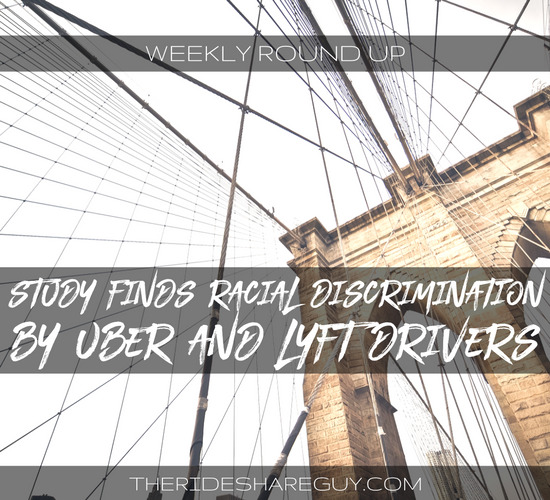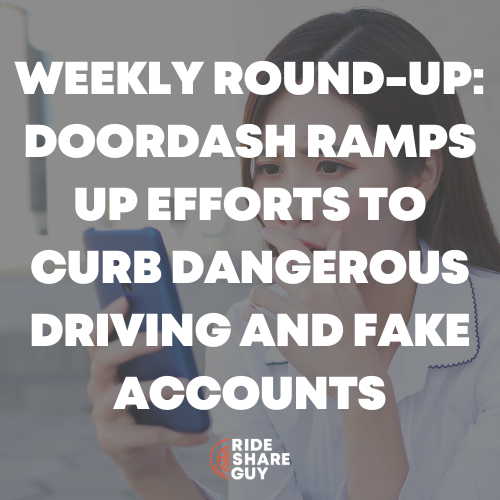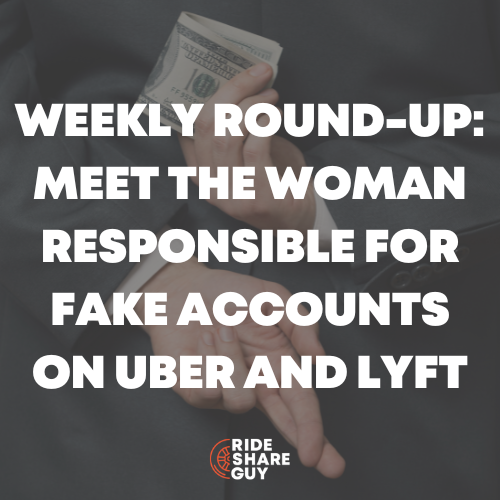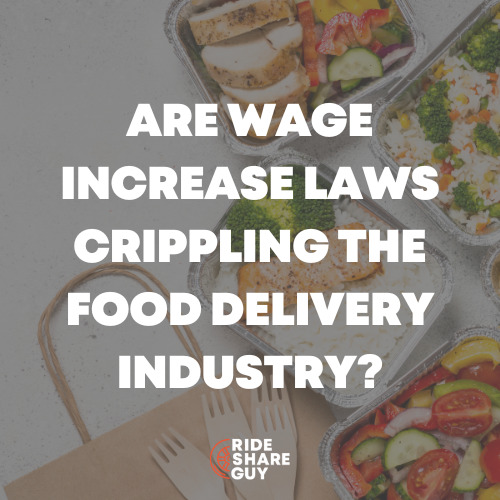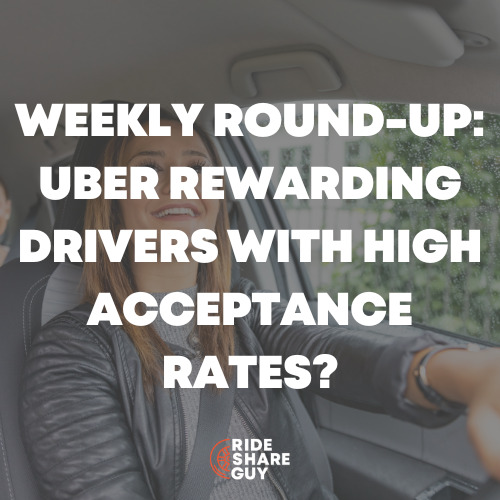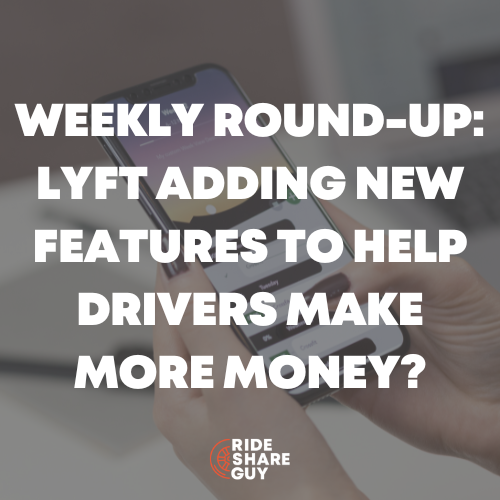Harry here. Racial and gender discrimination is a problem in many areas of society and, while the results of this latest study aren’t surprising, they do bring up some interesting issues around equality. And more importantly, it highlights the need for data transparency from Transportation Network Companies (TNCs) like Uber and Lyft. I can only imagine the discrimination drivers face from passengers who have more info about them (name and picture) is even worse, but we won’t know unless TNCs more willingly share this data.
Today, senior RSG contributor John Ince takes a look at this new study, potential safety issues for drivers, another Uber lawsuit and a big update to the Uber rider app.
Also, on Monday we’ll be hosting our second monthly YouTube Live Q&A session at 5 pm PT so please join us . You can subscribe to the YouTube channel here to be notified when we go live OR click here to get an e-mail reminder before the event!
Study Finds Racial Discrimination by Uber and Lyft Drivers [Bloomberg]
Sum and Substance: Drivers for Uber Technologies Inc. in Boston canceled rides for men with black-sounding names more than twice as often as for other men. Black people in Seattle using Uber and Lyft Inc. faced notably longer wait times to get paired with drivers than white customers. The findings come from a study published on Monday by researchers at the Massachusetts Institute of Technology, Stanford University and the University of Washington.
“In many ways, the sharing economy is making it up as they go along,” said Christopher Knittel, a professor at the MIT Sloan School of Management and an author of the study. “A lot of this is a learning process, and you can’t expect these companies to have everything perfect right out of the gate.” … In the case of ride-hailing apps, researchers similarly believe that names and photos are an issue. Such information gives drivers the means to discriminate against prospective riders.
Uber doesn’t show customer photos to drivers. Lyft does, but passengers aren’t required to provide a headshot. Both San Francisco-based companies give riders’ names to their drivers. … The study, conducted in Seattle and Boston, included almost 1,500 rides. Four black and four white research assistants—split evenly among men and women—ordered cars over six weeks in Seattle. All used their photos on the ride-sharing apps.
A second test was held in Boston with riders “whose appearance allowed them to plausibly travel as a passenger of either race,” although they used either “African American sounding” or “white sounding” names, the researchers said. The study found that Uber drivers disproportionately canceled on riders with black-sounding names, even though the company penalizes drivers who cancel frequently. … The research also observed discrimination in the taxi industry—a well-known, decades-old issue. The paper doesn’t compare the rate of discrimination between traditional drivers for taxis or ride-hailing apps. Uber has suggested that it doesn’t offer tips in its app, as many drivers have asked for, because they can introduce racial biases.
My Take: The results of this study aren’t the least bit surprising to me. Almost everybody has some bias, so why should anybody think drivers are an exception? Now where this gets dicey is when you dovetail this story with the other stories constantly in the news about Uber drivers who have been attacked or assaulted. What about the drivers who have assaulted women? (See following story). The question then becomes, is a driver justified in making discriminatory decisions based upon concerns of safety (statistically justified or not, regardless of race)? We’re talking about stark issues here – sometimes matters of life and death.
If Uber and Lyft truly believe that safety is the top priority, then decisions made to protect a driver’s safety make sense. But it still creates discomfort, knowing that a “rational” decision may unfairly impact someone on the basis of their skin color or gender. What do you think? Do you feel justified avoiding potential danger based on your gut feel of the situation?
An Uber driver was asked to take a woman home. He drove her to a motel instead, police say. [Washington Post]
Sum and Substance: An Uber driver has been arrested on kidnapping and assault charges after he took an unconscious female customer to a Maryland motel instead of dropping her at her home, police said.
The man is seen on a motel surveillance video pulling the woman from the back seat of a car and carrying her motionless body to a room, then staying in the motel for some time before leaving, police charging documents state. Westagne Pierre, 29 of Greenbelt, was arrested Thursday and has also been charged with theft after he used the woman’s credit card, according to a statement of charges from Prince George’s County Police.
Esteban Gergely, an attorney for Pierre, said his client denies there was lack of consent the evening he took the woman to the motel. The incident began Oct. 18 when the woman experienced an alcohol-induced “blackout” in the District, charging records state. A friend of the woman called an Uber for her and requested she be transported to her home in Fairfax County, Va., the records said.
Police said Westagne Pierre, 29, of Greenbelt, has been charged with kidnapping, assault and fraudulently using a victim’s credit card. (Prince George’s Police) An Uber driver identified as “Westange” took the woman from the District to her home, but then drove her to a Budget Inn in College Park, Md., police said…. Gergely said Pierre was released from custody after paying $250 in bond, which was lowered substantially from the $150,000 to be originally posted. Gergely said the reduced bond reflects lack of strong evidence in the case.
My Take: The day after this story broke, I got a ride request from a woman at a pretty raucous Halloween party. When I arrived the woman stuffed her friend in the back seat, told me to take care of her, and left the two of us alone in my car. The woman in the back seat promptly passed out. I was wondering how the heck I was going to get her out of the car. I thought about calling 911, but fortunately she came around when I announced our arrival.
It took some coaxing, but eventually she managed to get out of the car on her own, without incident. Nevertheless, this type of situation is all too common – especially for those of us who drive weekends and evenings. Somehow it doesn’t seem right that drivers should be put in situations like this – where we must cater to people who are pretty darn messed up. Now this guy in Maryland appears to have taken advantage of this situation, and will likely face the consequences for his choices.
A Radical Redesign Makes ‘Uber Feed’ the Center of Your Ride [Wired]
Sum and Substance: In the coming weeks, a major redesign of Uber’s app will make its way to users around the world. If you’re one of them, you’ll probably like it; when Uber demoed the update for us yesterday morning, it was significantly faster, smarter, easier to navigate, and more upfront about things like cost and estimated travel time. All good things! But while increased speed, usability, and transparency are all welcome, the most intriguing upgrade to Uber’s app isn’t how much faster it loads, the way it learns from your routines, or how it scrapes your calendar for the address of your meeting across town. No—the most compelling thing about Uber’s reimagined app is a new feature the company calls Uber Feed.
Historically, Uber has focused on getting you from point A to point B. Uber Feed fills the space between. “As soon as the driver starts the trip, the app experience transforms,” says product manager Yuhki Yamashita, who led the redesign. As your car pulls away from the curb, a scrollable feed of cards appears from the bottom of the screen, covering the old-school map of your trip in progress. Swiping up moves you through a stack of services Uber thinks you might find useful during your trip. Feeling peckish on your ride home from work? Swipe left on the UberEats card to see which restaurants can deliver to your house in sync with your arrival time. En route to a restaurant in the city? A Yelp card lets you side-swipe to browse photos and reviews of popular dishes. Running late? Relax: Right there in your Uber Feed is a Snapchat card with custom filters, including one that updates your neglected dinner date on your ETA.
That’s the idea, at least. “Having a set of experiences and information that are catered to you while you’re in the car can make the trip better and make you more informed about your destination,” says Uber CEO Travis Kalanick. It’s like in-flight entertainment, but more useful. And on paper, it’s pretty compelling.
My Take: Wired reporter Robbie Gonzalez and I just don’t agree here. Don’t get me going on this one. Travis Kalanick is selling this new app release as in flight entertainment, but it’s really a lot more invasive.
Okay, integration with Snapchat, Pandora et all is fine, but what’s all this in app advertising. Why is Uber cross selling other products like Uber Eats? Come on, what percentage of Uber passengers really want to be alerted about special dishes at restaurants along the way? Does Uber really need to scrape my contact list? Why won’t Uber give us a choice in this matter? Using the new app is a take it or leave it decision. The line in this Wired article that really rubs me the wrong way is when Gonzalez describes the car ride as the “lamest part of the on-demand transportation experience.” – Not my passengers, and not the passengers of most the the drivers I know. Our conversations are what makes the experience different and unique. Do people really want more ads on the app? What do you think?
San Francisco taxi company sues Uber for “predatory pricing tactics” [Techcrunch]
Sum and Substance: Another day, another lawsuit against Uber. This time it’s coming from DeSoto Cab, the oldest cab company in San Francisco. DeSoto, which recently rebranded as Flywheel Taxi, has accused Uber of things like monopolization, illegal and unfair practices and predatory pricing, according to a lawsuit filed in the U.S. District court of Northern California today. “In reality, Uber has done little more than implement a business strategy that openly flouts the law while shifting many of the costs and nearly all of the risks of providing ride-hail services from itself to its drivers and passengers while forcing a race to the bottom through predatory pricing tactics — where, propped up by billions of dollars in venture capital funding, Uber will remain until its illegal strategy has forced all other competitors from the market,” the lawsuit states.
In short, Flywheel Taxi says Uber has relied on its billions of dollars in venture capital to be able to offer rides to people at a price significantly lower than what it costs to sustainably run a ride-hailing service. To be clear, Flywheel Taxi is not the same as Flywheel, which develops a mobile operating system for the taxi industry
My Take: The most interesting question surrounding of this lawsuit is why it took the taxis so long? Most knowledgeable observers of this industry know that Uber has been doing almost all the things that this lawsuit alleges for years. Where it gets sticky is how you prove that Uber has been violating the law against the best lawyers money can buy. I hope that Flywheel taxi has deep pockets because this lawsuit is going to cost them a lot. If they’re any legal experts out there, please jump in and share your views on what the chances are that Flywheel can prevail here.
Readers, what do you think of this week’s round up?
-John @ RSG
Save
Save
